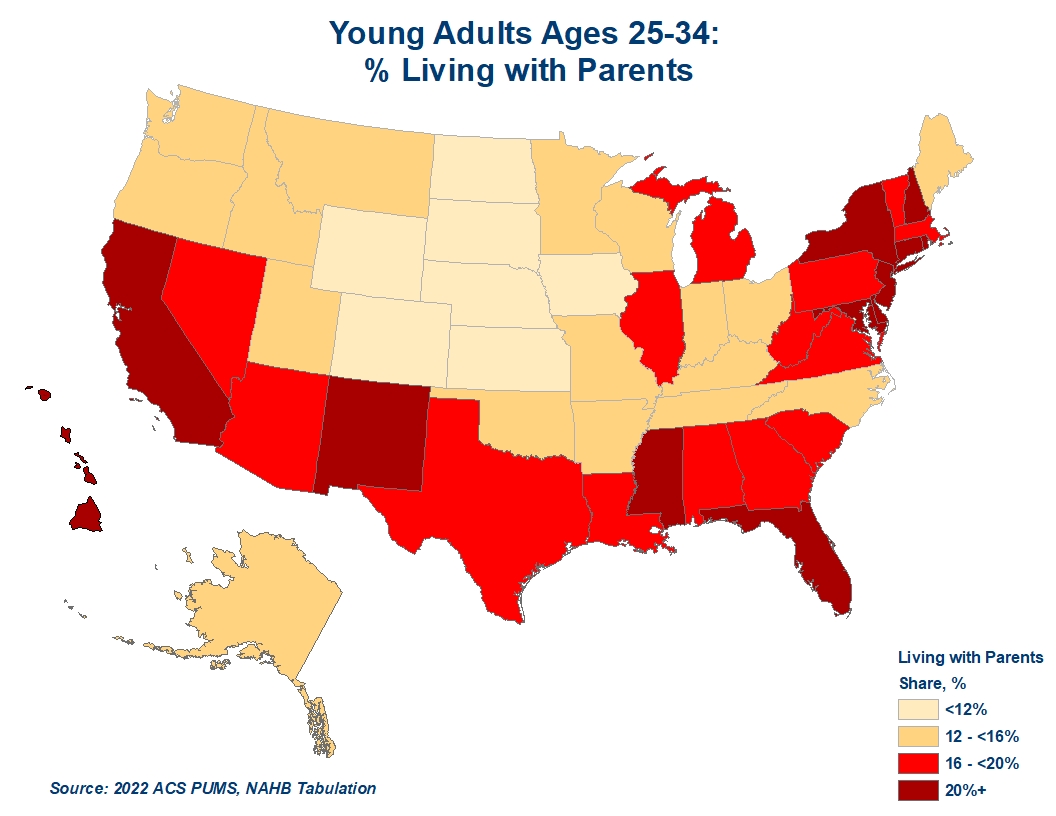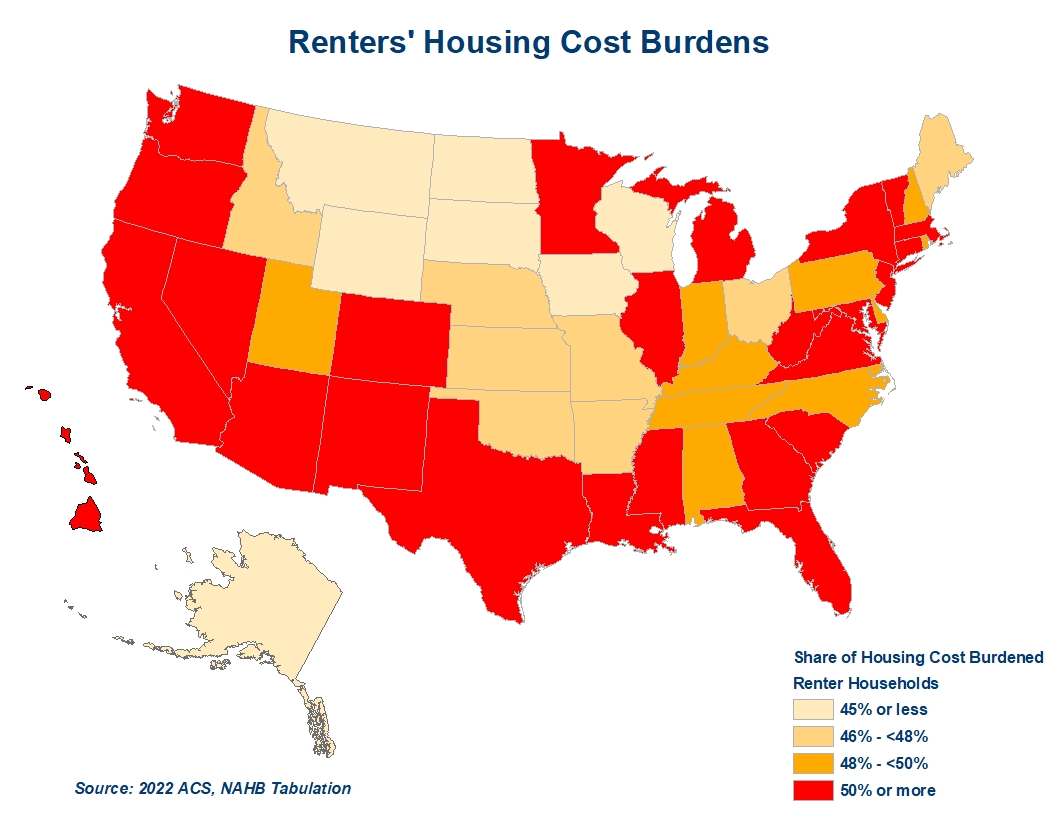February 28, 2024
(press release)
–
An earlier post published last month shows that young adults ages 25-34 continued the post-pandemic trend of moving out of parental homes with the share of those living with parents or parents-in-law dropping to 19.1% in 2022. Geospatial analysis of the 2022 ACS data reveals substantial differences across states, with the Southern and Northeastern states registering some of the highest shares of young adults remaining in parental homes. Renters’ housing cost burdens explain half of the cross-state variation. While the national average share declined to 19.2%, more than a quarter of young adults ages 25-34 remain in parental homes in Hawaii (28.1%), California (26.2%) and New Jersey (25.9%). New York and New Hampshire register the nation’s fourth and fifth highest shares of 23.4% and 22.9%, respectively. At the opposite end of the spectrum are states with less than one in ten young adults living with parents. The fast-growing North Dakota records the nation’s lowest share of 4.6%, while the neighboring South Dakotas registers 9.1%. In the District of Columbia, known for its relatively stable job market, less than 8% of young adults live with their parents. The cluster of central US states completes the nation’s list with the lowest percentages of young adults remaining in parental homes – Iowa (9.9%), Nebraska (10.3%), Kansas (10.9%), Wyoming (11%), and Colorado (11.6%). The elevated shares of young adults living with parents in high-cost coastal areas point to prohibitively expensive housing costs as one of the reasons for keeping young adults in parental homes. To confirm this intuitive assumption, we analyze housing cost burdens by state and age groups. The correlation analysis confirms that states with higher shares of owners and renters living in unaffordable homes (i.e., paying 30 percent or more of income on housing) register higher shares of young adults living with parents. The shares of housing cost-burdened renters are most significant and help explain half of the cross-state variation in shares of young adults living in parental homes. Multigeneration living, which is more prevalent among ethnic households, can also contribute to the elevated shares of young adults living with parents in the South, states with higher shares of Hispanic households, for example. However, the statistical analysis shows that while the correlation is positive, prevalence of Hispanic households does not carry any additional explanatory power once housing cost burdens are accounted for.

* All content is copyrighted by Industry Intelligence, or the original respective author or source. You may not recirculate, redistrubte or publish the analysis and presentation included in the service without Industry Intelligence's prior written consent. Please review our terms of use.









